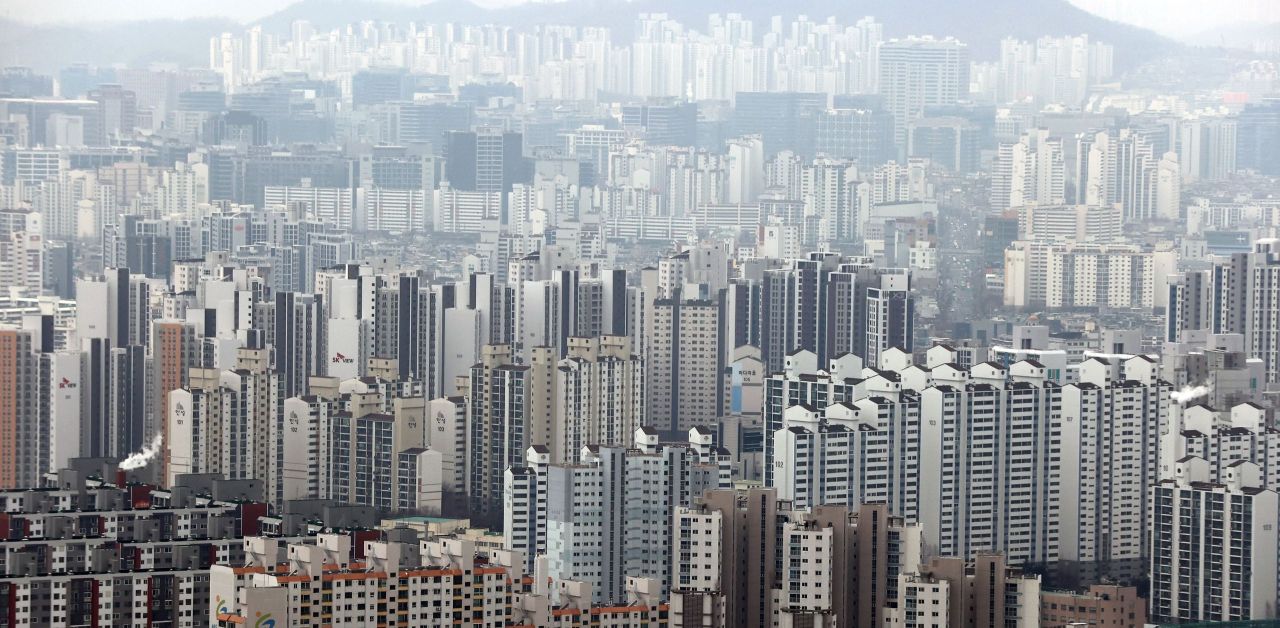 |
This photo, taken last Thursday, shows apartment buildings in Seoul. (Yonhap) |
The number of South Koreans who moved to different parts of the country hit a five-year high last year as housing transactions increased amid rising home prices, data showed Tuesday.
The number of people who changed their residences gained 8.9 percent on-year to 7.74 million in 2020, according to the data compiled by Statistics Korea.
It marked the largest since 2015, when the number of such people came to 7.76 million. It also represented the fastest on-year increase since 1999.
The population mobility rate -- the number of those relocating per 100 people -- remained at 15.1 percent last year, up 1.2 percentage points from a year earlier.
The statistics agency said people's movements jumped last year as housing transactions for home purchases and rentals rose amid rising home prices.
It was also attributable to the low base in 2019, when population mobility hit a 43-year low of 7.1 million, affected by the government's tough housing policy in the previous year.
As for the main reason for residence movements in 2020, housing issues topped the list with 38.8 percent, followed by family matters with 23.2 percent and jobs with 21.2 percent, according to the data.
The country's housing prices have shown no letup in rises despite the government's efforts to stabilize soaring home prices.
Prices for home rentals have also skyrocketed in recent months due largely to a supply shortage of housing lease deals.
South Korea has rolled out a series of comprehensive measures to stem rising home prices, including tax hikes and loan regulations. But the measures have resulted in only a short-term letup in housing prices.
Population mobility also rose for the seventh straight month in December 2020 due mainly to housing issues.
In December, the number of people who made cross-city or intercity movements grew 11.1 percent on-year to 718,000. It marked the fastest on-year increase for any December since 2006.
The population mobility rate came to 16.5 percent last month, up 1.7 percentage points from a year earlier. (Yonhap)








